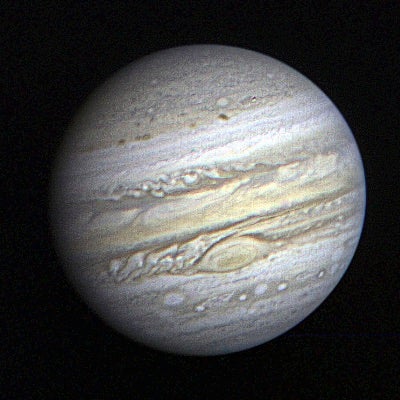
Despite its 484-million-mile (778 million kilometers) distance, the Sun still has a measurable impact on Jupiter, generating jets of plasma around the planet. But it turns out they’ve been hiding from us for nearly 45 years.
A study published in Nature Communications re-examines Voyager 2 data from its encounter with Jupiter in July 1979. The study’s authors found evidence for jets of plasma spilling off the outer regions of the giant planet’s huge magnetosphere, which is the area around a planet where its magnetic field holds sway.
The jets are made as solar wind hits the bow shock created by magnetosheath (the outer part of the magnetosphere), which both slows down the solar wind particles and heats them up. This generates jets downstream of the shock.
“Some portion of the solar wind, due to various mechanisms, can retain a large part of its original kinetic energy during the traversal through the shock,” Chao Shen, a heliophysicist at Harbin Institute of Technology in Shenzhen, China, tells Astronomy. “These portions of solar wind are called jets.”
These jets have been spotted before at Mars and Earth (with tentative detections at Mercury as well), but this is the first evidence found for them at Jupiter.
Old data, new find
The jets haven’t been spotted by other Jupiter-bound spacecraft like Galileo or Juno because, it turns out, the craft have been too close to the planet to observe them. Jupiter’s magnetosphere is huge — if we could see it in the night sky, it would create a glow around the planet some three times the size of the Moon, according to NASA. That means all of Jupiter’s moons are nestled within it — and thus, too, the Jupiter orbiters past and present.
But Voyager 2 swooped by Jupiter on a Grand Tour of the outer solar system. It crossed Jupiter’s bow shock on July 3, 1979, and entered the magnetosheath on July 5. During this time, Voyager measured an uptick in proton distribution — signs of jets in this region.
The finding is important because “it could help us understand how the various layers, structures, and processes specifically at the gas giant Jupiter are interrelated, just as at Earth,” Shen says. We’re able to study such jets a bit on Earth, Shen says, where “the processes and structures in the magnetosheath are able to affect the planetary magnetic system down to the ground.”
“Scientifically, Earth’s magnetosheath is a natural laboratory of plasma dynamics that is more advanced than artificial laboratories on the ground for the moment,” he adds. “It exhibits various types of wave activities, turbulent fluctuations, nonlinear processes, formation of small-scale structures, and transient phenomena in response to changes in the solar wind and interplanetary magnetic field conditions.”
So, finding jets in Jupiter’s magnetosheath could now provide a new lab to explore how plasmas behave farther from the Sun.
Though there is no initial evidence from Galileo Juno of jets when either entered the region, Shen and colleagues now are looking deeper to see if there’s something there. The team wants to confirm, if they can, the evidence seen for the jets at Jupiter. They may also try to look downstream of other planets’ bow shocks to investigate jets from these bombastic events.
The particulars of how the jets form in general is an “unsettled question,” Shen says. If his team can manage to turn up evidence for more, it could tell us a lot about how planets behave — and provide insight into some of the most powerful but elusive space weather events in the solar system.









